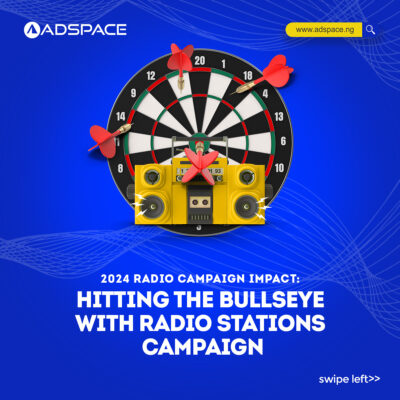Introduction
Media buying is an essential element in the realm of advertising. It’s the strategic process of acquiring advertising space or time across various media channels, such as TV, radio, print, and digital platforms. This comprehensive beginner’s guide is here to demystify media buying. We’ll cover the basics, delve into digital media buying, explore common challenges, and discuss future trends. By the end, you’ll be equipped with the knowledge needed to navigate the dynamic world of media buying confidently.
Understanding Media Buying
What Is Media Buying? Media buying encompasses the intricate activities involved in securing advertising space or time. This includes identifying the most suitable media platforms for your target audience, negotiating ad rates, ad placement, and continuously monitoring ad performance. It acts as the bridge connecting your brand with the audience.
Key Players in Media Buying To grasp media buying, you must understand the roles of key players. Media buyers and planners, advertising agencies, and media sellers, like TV stations or website owners, all have pivotal roles. Their synergy ensures successful advertising campaigns.
Types of Media Buying (Traditional vs. Digital) Media buying has evolved over the years, branching into two main categories: traditional and digital media buying. Traditional media buying involves platforms like print, TV, and radio. Digital media buying, on the other hand, covers online advertising spaces. Let’s explore these types with some real-world examples.
Traditional Media Buying: Think of a local radio station running ads for a car dealership, or a national newspaper featuring a full-page ad for a new smartphone model. These are examples of traditional media buying. You choose the platforms based on factors like audience demographics, reach, and relevance.
Digital Media Buying: Digital media buying involves channels like social media advertising, search engine advertising, and website banners. Consider an e-commerce company running Google Ads to promote its products. When you see ads on Facebook relevant to your interests, that’s digital media buying at work.
The Media Buying Process The media buying process follows a structured sequence:
- Defining Advertising Goals: It all begins with clear goals. Is it brand awareness, lead generation, or sales? Your goals determine your media choices.
- Market Research: Before selecting media channels, you must conduct market research. This includes identifying your competitors and studying consumer behavior. Imagine you’re a coffee shop chain considering TV ads to reach more customers. In your research, you discover that your competitors have successfully used this medium to boost sales.
- Competitive Analysis: The next step is competitive analysis. Study how your competitors are using media channels. What works and what doesn’t in your industry? If you’re a software company, you might find that your competitors are using LinkedIn ads to target professionals. This insight could help shape your strategy.
- Media Channels and Platforms: Choose the right media channels. Your decision should be based on the preferences of your target audience. For instance, if you’re promoting a local art event, placing ads in a regional arts and culture magazine might be an effective choice.
- Selecting the Right Media Mix: A well-balanced media mix combines different channels to reach your audience. This strategy optimizes campaign performance and ensures your message is heard from various sources.
Setting Your Media Buying Goals
Defining Your Advertising Objectives Start by clearly defining your advertising objectives. This provides direction for your media buying efforts. If you’re launching a new fashion brand and want to raise awareness, your objective is brand awareness.
Identifying Your Target Audience Understanding your target audience is critical. The better you comprehend your audience, the more effectively you can tailor your media buying strategies to reach them. If you’re a fitness supplement company, you’ll want to reach individuals interested in health and fitness. This information helps you decide where to place your ads.
Budget Allocation Determining your budget is fundamental. Your budget allocation should align with your goals and the media channels you intend to use. Effective budget management is crucial for a successful campaign. If you’re launching a new mobile app, you may allocate more budget to digital advertising platforms like Facebook and Google Ads, where you can target users by app interests.
Research and Planning
Market Research Market research is crucial for understanding the competitive landscape and consumer behavior. It enables you to identify opportunities and threats that influence your media buying decisions. If you’re an eco-friendly cleaning product company, market research might reveal a rising trend in eco-conscious consumer behavior. Knowing this, you can align your media buying strategies with this trend.
Competitive Analysis Analyzing your competitors’ advertising strategies provides insights into what works and what doesn’t in your industry. This competitive knowledge is valuable for crafting a winning media buying strategy. For instance, if you’re a tech startup, your competitive analysis might reveal that other startups are using podcasts to reach a tech-savvy audience. You can follow suit, creating a podcast advertising strategy.
Media Channels and Platforms Choosing the right media channels is a crucial decision. Consider factors like your target audience’s preferences, reach, and cost when selecting traditional or digital media platforms. Let’s look at a few examples.
Traditional Media Channels: Traditional media encompasses platforms like TV, radio, billboards, newspapers, and magazines. If you’re a restaurant owner targeting the local community, placing an ad in the local newspaper or running a radio spot during peak commuting hours might be the way to go.
Digital Media Channels: Digital media includes online platforms like social media, search engines, websites, and mobile apps. Suppose you’re a travel agency aiming to attract young travelers. Using Instagram to showcase visually appealing destinations might be a wise choice.
Selecting the Right Media Mix
Why a Media Mix Is Important A well-balanced media mix leverages various channels to convey your message to the audience. This approach maximizes campaign effectiveness and ensures your message reaches your audience from multiple sources. For example, if you’re marketing a new line of kitchen appliances, your media mix may include cooking websites and social media platforms.
How to Choose the Right Media Mix Choosing the right media mix is a strategic decision. Analyze the preferences of your target audience and how they consume content. For example, if you’re promoting a new video streaming service targeting a younger demographic, your media mix may include YouTube ads and social media channels, as these platforms are popular among young viewers.
Negotiation and Implementation
Negotiating Ad Rates Negotiating ad rates is a critical aspect of media buying. The goal is to secure the best deal that aligns with your budget. Imagine you’re an event organizer planning to advertise a music festival. Negotiating ad rates with a local radio station can help you reach a large, music-loving audience within your budget.
Ad Placement Deciding where your ads will be placed is another vital step. You should consider factors such as ad position and time slots. For instance, if you’re a sports equipment manufacturer, you’d aim to place ads during live sports broadcasts to reach your target audience during the game.
Continuous Monitoring and Optimization Once your ads are running, continuous monitoring and optimization are necessary. Real-time data analytics are essential for gauging your ad’s performance. If you’re a tech retailer running a digital campaign for a new product, tracking metrics like click-through rates and conversion rates helps you evaluate the ad’s effectiveness.
Challenges in Media Buying
- Ad Fraud Ad fraud is a concern in digital media buying. It’s the practice of generating fraudulent clicks, impressions, or conversions to deceive advertisers. Preventing ad fraud involves using trusted ad networks and employing fraud detection tools.
- Ad Blocking With the rise of ad blockers, reaching your audience can be challenging. To overcome this, you can explore native advertising, which integrates ad content into the platform’s organic content, making it less likely to be blocked.
- Data Privacy Data privacy is a critical concern. As an advertiser, it’s crucial to adhere to data protection regulations like GDPR. Violating these regulations can lead to significant fines. Ensure your media buying strategies are compliant with data privacy laws.
- Future Trends in Media Buying
Programmatic Advertising Programmatic advertising uses artificial intelligence and data to automate the ad buying process in real-time. It offers precise targeting and efficient ad delivery. For instance, if you’re a fashion retailer, programmatic advertising can help you reach individuals who have shown interest in fashion.
Native Advertising Native advertising is becoming more prominent. It involves creating ads that fit seamlessly into the platform’s content, making them less disruptive to the user experience. For example, if you’re a tech company launching a new app, native ads can be integrated into tech news websites.
Personalization Personalization is a growing trend. Advertisers use data to tailor ads to individual preferences. Imagine you’re a subscription box service. Personalization helps you show beauty product ads to customers who frequently purchase beauty-related items and fitness product ads to those who prefer fitness items.
Conclusion
The Importance of Media Buying for Successful Advertising
In this era of information overload, effective media buying has never been more critical. The ability to reach the right audience with the right message through the right channels is the essence of successful advertising. With a robust media buying strategy, you can achieve your advertising goals, whether it’s brand awareness, lead generation, or boosting sales.
Encouragement for Beginners to Dive into Media Buying
For beginners, entering the world of media buying might seem daunting. However, this guide has equipped you with the fundamental knowledge required to embark on this exciting journey. Remember, practice makes perfect, and as you explore media buying, you’ll gain valuable experience that will contribute to your success in the ever-evolving advertising landscape.
Frequently Asked Questions (FAQs)
Answering Common Queries About Media Buying
- What are the different types of media buying?
- Media buying can be categorized into traditional and digital media buying. Traditional media involves platforms like TV, radio, print, and outdoor advertising. Digital media buying focuses on online platforms like social media, search engines, websites, and mobile apps.
- How do I select the right media channels for my advertising campaign?
- The selection of media channels depends on factors like your target audience, budget, and campaign goals. Consider where your audience spends their time and which channels align with your objectives.
- How can I negotiate ad rates effectively?
- Effective negotiation involves researching ad rate benchmarks for your chosen media platform and highlighting the value your campaign can offer. Demonstrating the potential benefits to the media seller can lead to favorable rates.
- What is programmatic advertising?
- Programmatic advertising uses automated processes and data analysis to purchase and place ads in real-time. It offers precise targeting and efficient ad delivery.
- How can I ensure data privacy compliance in media buying?
- To ensure data privacy compliance, adhere to regulations like GDPR, and obtain explicit consent from users when collecting and using their data for ad targeting.
As you’ve now gained a comprehensive understanding of media buying, it’s time to take action. Dive into the world of media buying with confidence, explore different media channels, set your advertising goals, and adapt to the changing advertising landscape. With the right strategies and continuous learning, you’ll be on your way to crafting successful advertising campaigns that connect with your target audience effectively.
By following the guidance provided in this comprehensive beginner’s guide, you’ll be well-prepared to navigate the exciting world of media buying and craft effective advertising strategies that reach and engage your target audience effectively. Whether you’re a seasoned marketer or a beginner, media buying is a skill that can significantly enhance the success of your advertising campaigns. So, dive in and make your mark in the advertising industry!











